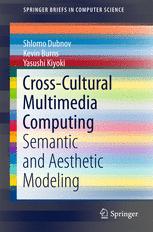

Most ebook files are in PDF format, so you can easily read them using various software such as Foxit Reader or directly on the Google Chrome browser.
Some ebook files are released by publishers in other formats such as .awz, .mobi, .epub, .fb2, etc. You may need to install specific software to read these formats on mobile/PC, such as Calibre.
Please read the tutorial at this link: https://ebookbell.com/faq
We offer FREE conversion to the popular formats you request; however, this may take some time. Therefore, right after payment, please email us, and we will try to provide the service as quickly as possible.
For some exceptional file formats or broken links (if any), please refrain from opening any disputes. Instead, email us first, and we will try to assist within a maximum of 6 hours.
EbookBell Team

4.7
36 reviewsThe ability to communicate cultural codes in multimedia depends on their meaning and beauty, as perceived by different audiences around the globe. In this book, the ongoing research on computational modeling of visual, musical and textual contents is described in terms of identifying and mapping their semantic representations across different cultures. The underlying psychology of sense-making is quantified through analysis of aesthetics in terms of organizational and structural aspects of the contents that influence an audience’s formation of expectations for future signals, violations of these expectations, and explanations of their meaning. Complexity-accuracy tradeoffs in sound representation are further used to develop new computational methods that capture poietic and aesthetic aspects in music communication. Experimental studies are reported that try to characterize preferences for complexity in abstract, classical and traditional art and music across samples of Western and Far Eastern cultures. These experiments illustrate how aesthetics can be computed in terms of semantic and information measures, highlighting commonalities and uncovering differences in aesthetic preferences across cultures and individuals.